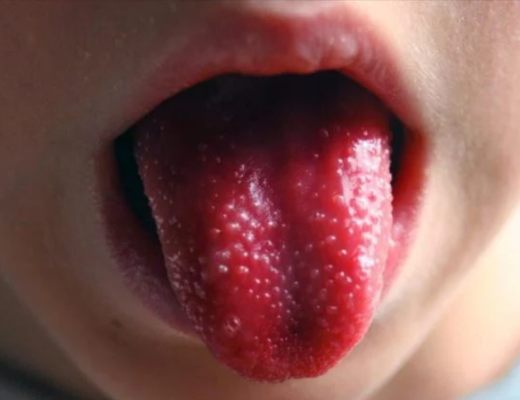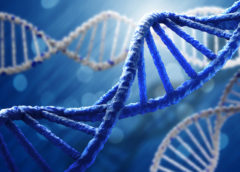Salvatore Vendemmia - Aversa, Ilaria Pezone - Aversa, Giuliana Cottuni - Aversa, Maria Vendemmia - Napoli
INTRODUCTION
Kawasaki disease is a complex and peculiar form of vasculitis that occurs mainly in infancy.It can be found in infants and children between 1 and 8 years of age. About 80% of the affected persons have, generally, less than 5 years. It appears to be prevalent in males. The peak ranges between 18 and 24 months of age. Cases between adolescents and adults are very rare. It is manifested by high temperature, 39-40°C, lasting at least 5-7 days, associated with irritability, intermittent abdominal pain, lethargy.
Diagnosis may be suspected for simultaneous presence of bilateral non-exudative conjunctivitis, lesions to the lips, presence of oral mucosa edema, hyperemia, cracking and dryness, reddened tongue with appearance of "strawberry or raspberry".
Almost always a polymorphic, erythematous and macular exantema is appreciated, sometimes orticarioid, morbilliform or scarlattiniform, more evident to the trunk often accentuated in the perineal region.
The rash can also occur on the face and limbs.
Often obvious alterations at the extremities of the limbs: desquamation, erythema, edema. The edema is peculiar: taut, hard without the mark of the fovea.
After the first week, usually, begins a particular periungual, palmar, plantar, perineal desquamation and sometimes the superficial skin layer detaches into large flaps, highlighting a normal underlying skin. From a symptomatological point of view, 30-40% of cases may have arthritis, arthralgia, thrombocytosis.
CARDIAC MANIFESTATIONS
Early manifestations are acute myocarditis with heart failure, arrhythmias, endocarditis, pericarditis. Coronary aneurysms may subsequently form. Dangerous is the giant coronary artery aneurysm that, although rare, can cause cardiac tamponade, thrombosis and heart attack.
Inflammation may affect the upper airways, pancreas, and bile ducts, kidneys, mucous membranes, extravascular tissue, lymph nodes.
CLINICAL CASE
Male subject 15 years old, temperature 39-40 °C for seven days, dehydrated, raspberry tongue, reddened and oedematous oral mucosa, dry and slightly fissured lips, bilateral conjunctivitis, mild drowsiness, headache, muscle and joint pain. Massive exantema 'on the entire body surface' maculo-papulous, irregular alvo with intermittent abdominal pain. No desquamative marks at the extremities. Systolic puff 1-2/6 on the mesocardium no meningeal signs, to the chest extension of the expiratory phase.
Neurological reflexes are normal, left humeral pressure is 90/40. Laboratory tests: High ESR and CRP, ANA ASMA, rheumatoid factor test were normal, leukopenia, neutropenia, mild lymphocytosis, immature cell enlargement. Serological evidence of elevated COVID 19, IgG and IgM infection. Negative cultures, moderate thrombocytosis, high LDH, slightly altered liver and pancreatic enzymes. Echocardiogram within limits. The therapy practiced was symptomatic: hydration, antipyretics, symbiotics. After ten days the patient was in good condition. The diagnosis of multisystemic inflammatory syndrome from COVID was then formulated.
MULTI-SYSTEM INFLAMMATORY SYNDROME (MIS-C)
This pathology should be kept in mind. It has been rarely observed and described as a complication of SARS COVID 2 infection. Symptoms in children and adults are remarkably similar to those of Kawasaki disease.
CONCLUSIONS
In such a case it is worth being careful and prudent as the symptoms are extremely misleading. It is advisable to carefully follow the symptomatological evolution, to carry out all useful laboratory tests and the necessary instrumental investigations to exclude a Kawasaki disease. The positive of the tests for COVID infection and further examinations and observations of the patient will make us to place the diagnosis of multisystemic inflammatory syndrome by COVID.
BIBLIOGRAPHY
- Darby JB,, Jackson JM: Kawasaki disease and multisystem inflammatory syndrome in children. Am. Fam. Physician 104 (3): 244-252, 2021
- Burney JA., Roberts SC., et all: Epidemiological and clinical features of new disease during Covid 19 pandemic in U:S: Jama New Open 5 (6): e 2217436, 2022
- Galdiero Massimiliano, Galdiero Marilena: Infezioni virali emergenti e riemergenti tra passato, presente e futuro: conoscere per intervenire, Lo Zibaldone del Terzo Millennio, pagg. 247-266, Cuzzolin Editore, Napoli, 2020
- Plesca Doina Anca, Clinical and epidemiological characteristics in children confirmed with SARS COV-2 infection in a Non-Covid-19 pediatric clinical hospital from Romania in the first 6 months of the pandemy, Lo Zibaldone del Terzo Millennio, pagg. 296-306, Cuzzolin Editore, Napoli, 2020







